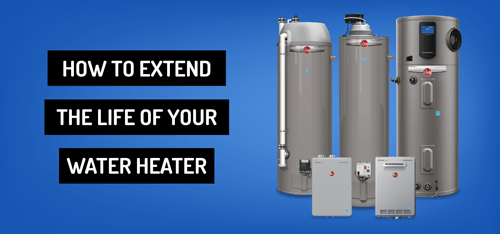Most people concur that having access to hot water is undoubtedly one of the most important amenities in any home. Due to this urgent demand, you must conduct timely quality inspections on your water heater. Your water heater is one of your home’s most crucial appliances, yet you need to give it more thought.
You must maintain it, so your water heater operates as efficiently as possible because it is crucial. The normal lifespan of a water heater is eight to twelve years. However, sure water heaters may only succeed earlier if they are maintained. Despite this, there are techniques to make your water heater last longer.
Table of Contents
Ways In Which You Could Be Extending The Life Of Your Hot Water System
Keep Your Water Heater Accessible
You have to be aware of the kind of water heater in your house. Frequently, the label attached to the tank will be printed with the capacity and type of geyser you have or desire. The tag also specifies how long your geyser’s warranty will last.
Is the water heater’s warranty no longer in effect? This suggests you conduct frequent inspections for malfunctions and consider hiring Dead Short Electrical to prevent unforeseen geyser repairs. Keep your water heater system accessible for simple maintenance. Be careful not to store anything close to your geyser at least two feet away. It is also crucial to put it at a location with enough height.
Reduce The Temperature To Save Energy
A decent rule of thumb is to keep the temperature around 120 degrees Fahrenheit to kill the great majority of germs. Your hot water supply will use more electricity the hotter it gets. Adjusting the thermostat on your water heater may change this setting. This straightforward geyser repair advice will help you save money and power. The temperature may be changed by using a flathead screwdriver.
Examine The TPR Valve
A water heater might explode if a hazardous internal pressure is allowed to build up in the system. Because of this, manufacturers include a temperature pressure relief safety valve in water heaters (TPR). If it determines that the pressure has increased to a hazardous level, this valve releases the tank’s pressure. To make sure the TPR valve is functioning properly, test it frequently.
Perform An Anode Rod Test
To prevent rust and other pollutants from building up inside the tank of your water heater and eroding it away, an anode rod is installed inside the tank. The Anode rod must be changed since it ultimately deteriorates or wears out.
Additionally, the rod has to be changed if it develops a coating of white calcium deposits or if its thickness has decreased to about half an inch. As a result, it is advised to examine the anode rod’s condition at least once every three years.
Water Heater Flush Yearly
It’s important to empty the water heater once a year because it makes it possible to remove sediment and clean the interior of the tank. This will prolong the water heater’s life and cut your monthly energy costs by preventing it from working too hard.
Additionally, as we all know, warmer temperatures promote the buildup of silt. It is advised to keep your water heater’s temperature at 120 degrees or below.
Isolate The Pipes
Insulating your home’s walls or roof is similar to insulating the water heater tank. It is an easy and inexpensive way to increase your water heater’s energy efficiency and make financial savings. Insulation might reduce heat loss by up to 45% and the costs associated with overheating the water.
Your water heater must already be insulated if you just bought it. The insulation should be replaced with a new one with an R-value of at least 24 if it is older. If unsure, you may check the insulation level by touching the water heater; if it feels warm to the touch, the water heater requires more insulation. Before attaching each pipe to the hot water tank, get foam pipe insulation from hot water plumber Adelaide and wrap each pipe in it.
Use Metal Pipes Should Be In Place Of Plastic Inlet-Outlet Pipes
It is strongly advised to use metal inlet and output pipes rather than the plastic ones that come with a geyser since they are more heat-resistant. Additionally, remember to check the joints routinely. If you notice white deposits around the joints brought on by hard water or corrosion, it’s time to fix or replace the input and exit water pipes.
Turn Off Often
It is advised to avoid leaving the geyser on for prolonged periods, as this will shorten the water heater’s life. It makes more sense to switch it on only five minutes before you need it rather than thirty.
Examine The Plug
If you utilise a cable with a low power supply, your switch will frequently ignite. The plug and the pins will heat up due to the higher electrical wattage and power fluctuations, producing burn scars on both the plug and the pins. Use new plugs and sockets to prevent any electrical short circuits caused by this. Use the MCB switch in place of the standard one as well.
Conclusion
If you have noticed that your water heater is no longer producing as much hot water as it used to, then the first thing you can do is shut off the power supply to your water heater when you are away from home. By doing this, you will avoid accidental activation of the pilot light (which can cause a fire if not extinguished), or it may be time for you to start thinking about a replacement.
While there may be more pleasant topics to think about, it is a good idea to take action while there is still some time before your water heater fails. If you have any questions, you should contact licensed Dead Short Electrical, which can help you find the right replacement hot water heater for your needs and financial situation.













jayaa
January 9, 2023I agree with your point of view, your article has given me a lot of help and benefited me a lot. Thanks. Hope you continue to write such excellent articles.